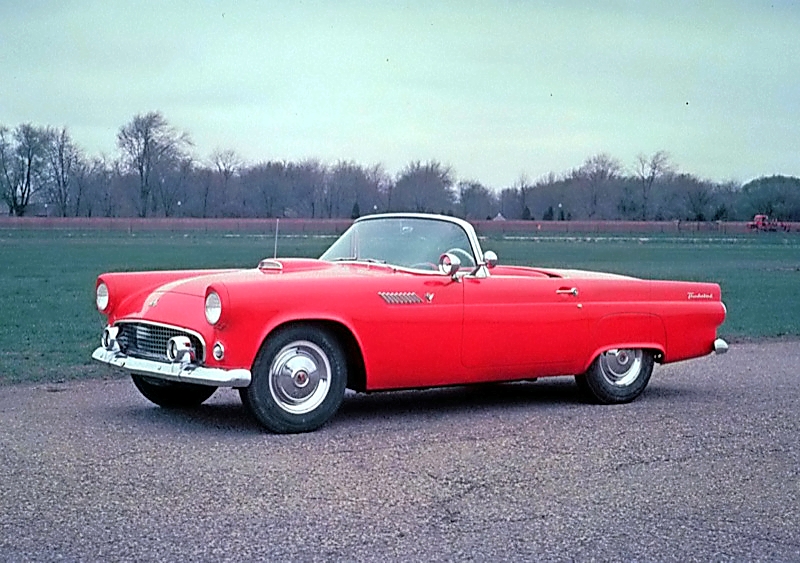By David Pike
Post-war America was a boom time for car production, with a desire for cars that were exciting as well as practical.
As early as 1951, General Motors and Ford started working on ‘sporty’ prototypes.
GM revealed the Chevrolet Corvette in 1953 and Ford soon followed suit with its first Thunderbird in 1954 (sold as a 1955 model).
It’s been said with some conviction that the best thing about the Ford Thunderbird was its name.
Compared with the Corvette, the Thunderbird was also much more attractive. It had an interesting, if conventional, two-seater steel body shell with winding windows and an optional hardtop. And although it weighed 1285kg, it was the smallest American Ford built for decades.
If that didn’t say enough about the American car industry at the time, its dramatic lack of technical innovation confirmed it.
The Thunderbird had been able to progress from prototype to production in only a few months because it was largely composed of components from other Ford cars.
But the engine was a different story: a new overhead valve 4.2-litre V8, which produced 120kW against the 100kW norm. That was quickly raised to 144kW for a three-speed manual version and 148kW for a two-speed automatic, both with gearchange on the steering column.
The exhaust note had the familiar burble that only a V8 could produce.
In the US, customers queued up for the Thunderbird. Its styling was absolutely American. As a luxurious two-seater coupe it cost twice as much as a regular sedan and was heavily decorated with chrome. As Ford executives secretly planned a longer, lower, wider four-seater Thunderbird, they used the ’56 model as an experiment to see if they could sell safety. It had a deep-dish steering wheel, padded dashboard and optional seatbelts, as well as dual exhaust pipes routed through the over riders. The safety aspects fell flat in the marketplace, but the American public loved the exhaust pipes, which reminded them of a Porsche, and they became the height of fashion.
All the 1956 model T-birds had a ‘continental’ spare wheel kit mounted behind the rear bodywork to liberate more space in an already vast luggage boot.
The fact that its overhanging weight
made handling a little difficult seemed to be of no concern. The Thunderbird was a safe car with its new steering wheel, and portholes in the hardtop – claimed to improve visibility – were an option.
There were tail fins for 1957 but that was the last year for the two-seater Thunderbirds.
In 1958 a completely different, longer, heavier, four-seater car was marketed, with
the only sporty thing about it being the
224kW engine.








